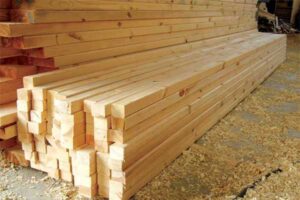Fiberglass and wood are two common materials used in a variety of applications, including construction and manufacturing. Both have their own unique properties and characteristics, and it is important to understand the differences between them in order to determine which is the best choice for a particular project.

Fiberglass Material
When it comes to strength, fiberglass has the upper hand over the wood. This is because fiberglass is made from extremely fine glass fibers that are woven together to create a strong and durable material. Wood, on the other hand, is a natural material that is made up of cellulose fibers. While wood is also strong, it is not as strong as fiberglass and can be easily damaged by moisture and other environmental factors.
Fiberglass is also more resistant to fire than wood. This is because fiberglass does not burn easily, and it does not produce any toxic fumes when it does burn. Wood, on the other hand, is highly flammable and can quickly ignite when exposed to heat or flames. In a fire situation, fiberglass can provide better protection than wood.
Another advantage of fiberglass over wood is its low maintenance requirements. Fiberglass does not rot or decay like wood, and it does not require regular painting or staining to keep it looking good. This makes it a more cost-effective option over the long term.

Wood Materials
Despite its strengths, fiberglass does have some limitations. For example, it is not as aesthetically pleasing as wood, and it does not have the same warm, natural look. Additionally, fiberglass can be more expensive than wood, depending on the specific application.
Overall, fiberglass is a strong and durable material that offers many benefits over wood. It is resistant to fire and moisture, requires little maintenance, and is cost-effective over the long term. However, it is important to carefully consider the specific needs of a project before making a decision about which material to use.




























